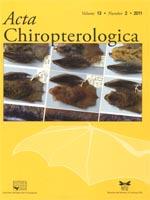Species in Carollia, although loosely recognizable by size and shape, show overlap in most morphological character states as well as in geographic distribution and use of resources. However, there is a lack of understanding regarding where and what this overlap is. Variation in the morphology of Carollia should correspond to the environment, yet such patterns remain unknown. Species may coexist as a function of environmental factors and sympatry may not be uniform along the distributional extent of these species. An informed perception of the morphological and ecological variation across their geographic range may clarify not only the limits and extents of their spatial and morphological boundaries, but also may provide insights into the relationships among size, shape and environment. In our quantitative analysis of the variation in morphology and environment we tried to answer what limits species distribution, as well as how morphology changes with the environment within and among species. A combination of multivariate contrasts and partial least square analyses were used to assess the correlations and interactions between size, shape, distribution and environment among C. castanea (small), C. brevicauda (medium) and C. perspicillata (large size) in Ecuador. We show how the three Carollia species vary and differentiate along an ecomorphological space of gradients, barriers, size and shape. From a macroecological perspective, and contrary to the theory of limiting similarity, the smallest species is the most distinct in its environmental space and also the one that experiences the strongest changes in shape across geographic regions. The other two more similar species, in both size and shape, show a larger overlap in their environmental space. This seems to suggest that size can act as a buffer in extreme or changing environments and that higher gene flow is more probable for larger high-altitude species.
How to translate text using browser tools
1 December 2011
Environmental Components and Boundaries of Morphological Variation in the Short-Tailed Fruit Bat (Carollia spp.) in Ecuador
Pablo Jarrín-V,
Pablo A. Menendez-Guerrero
ACCESS THE FULL ARTICLE

Acta Chiropterologica
Vol. 13 • No. 2
December 2011
Vol. 13 • No. 2
December 2011
Carollia
distribution
Ecuador
environment
shape
size




